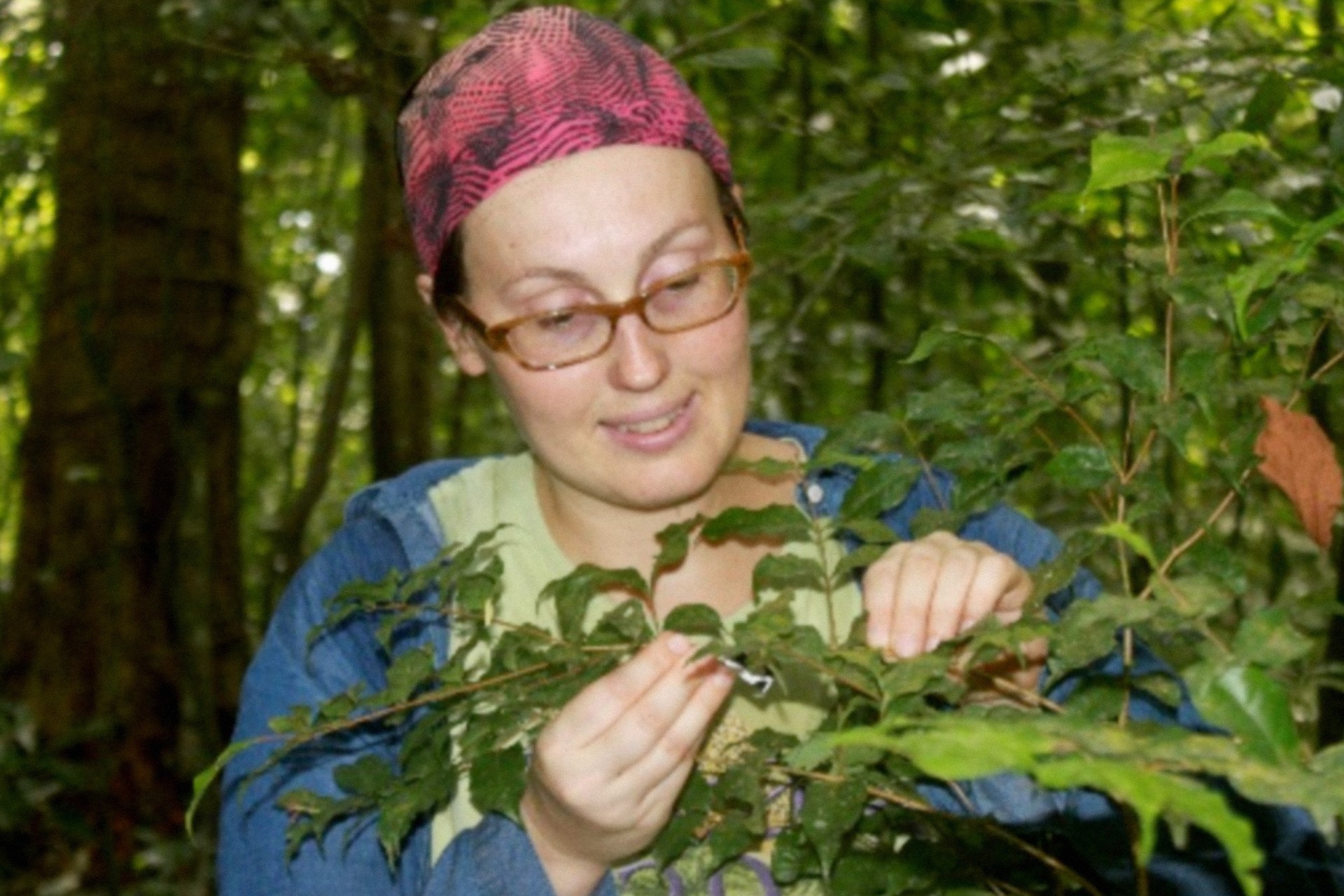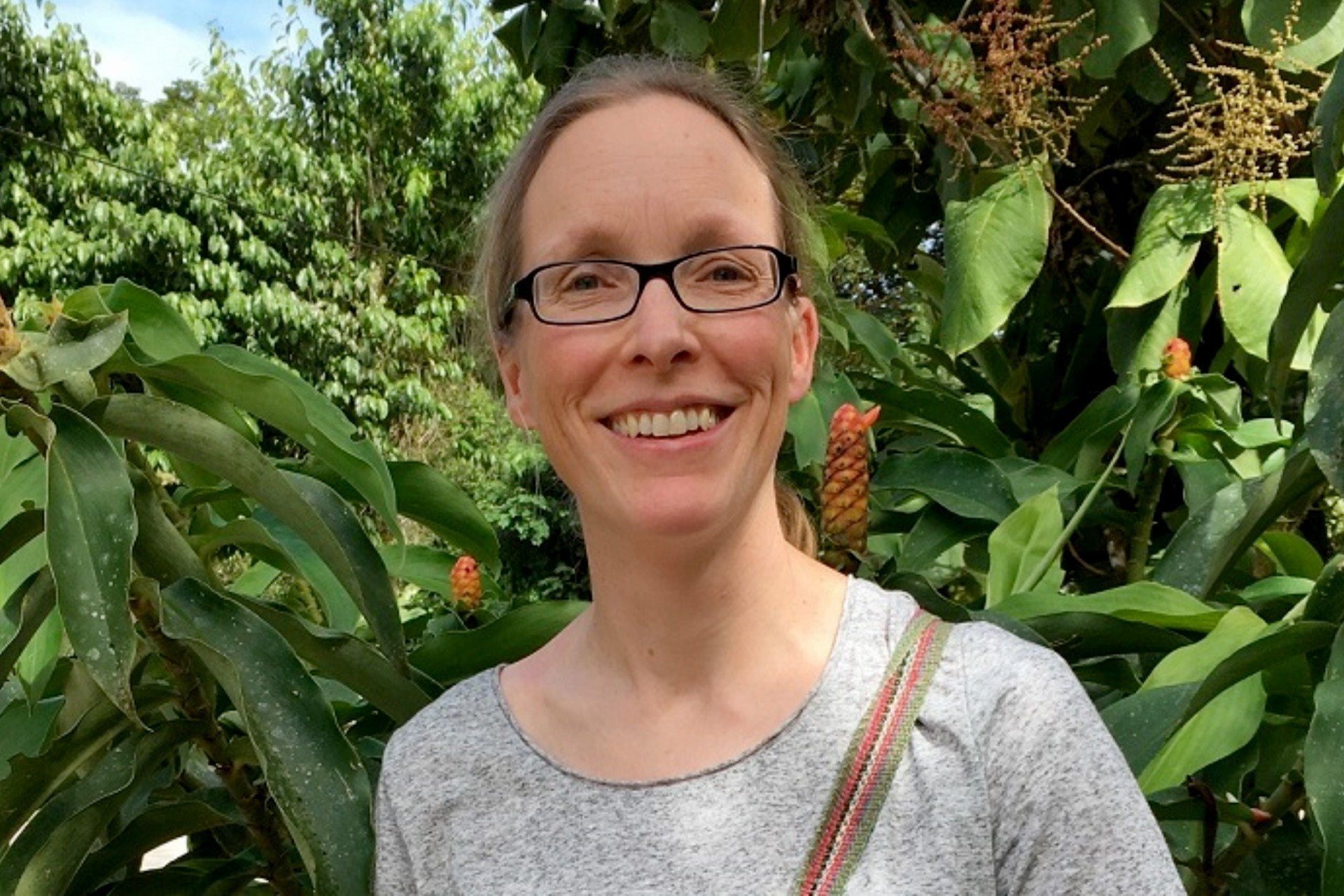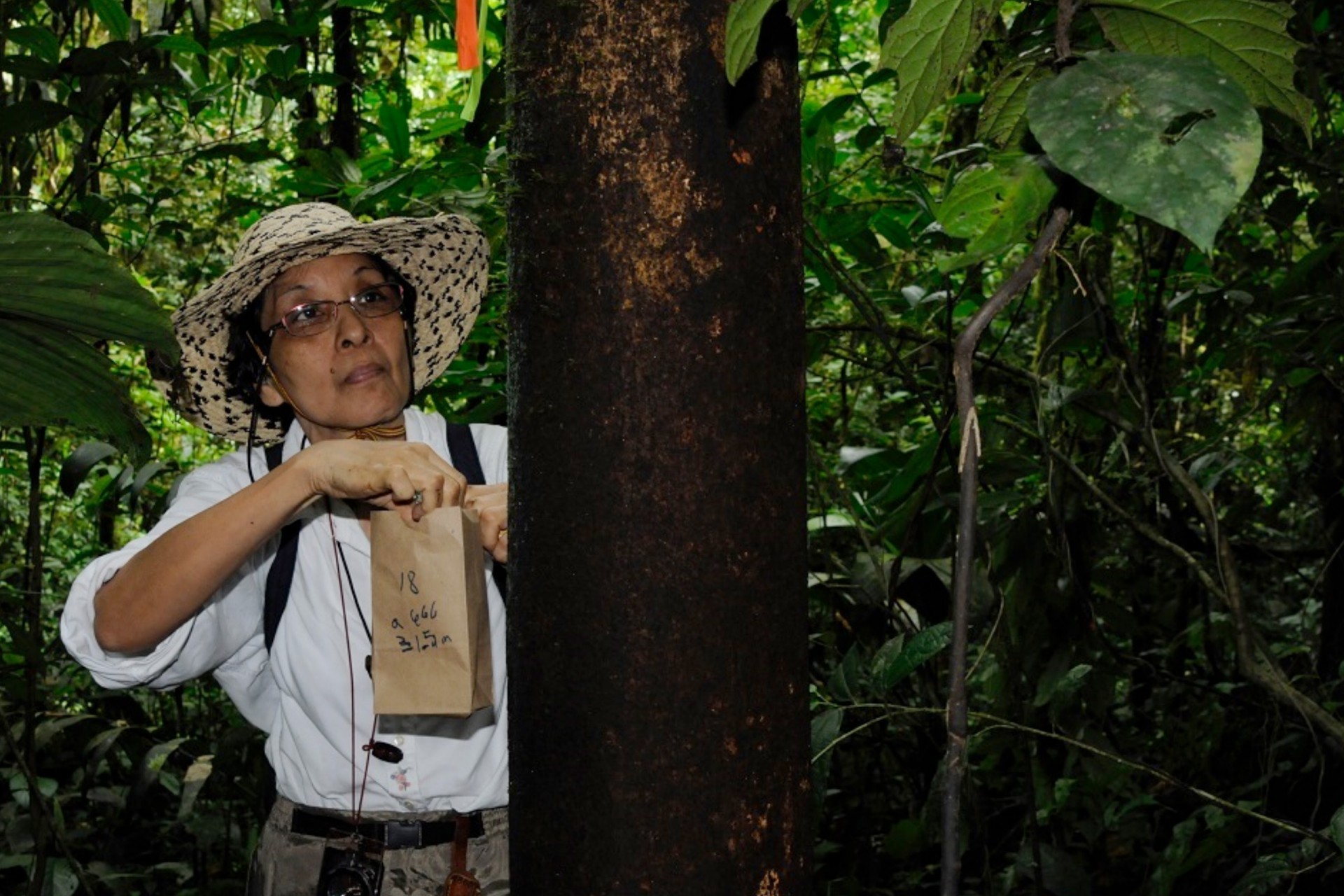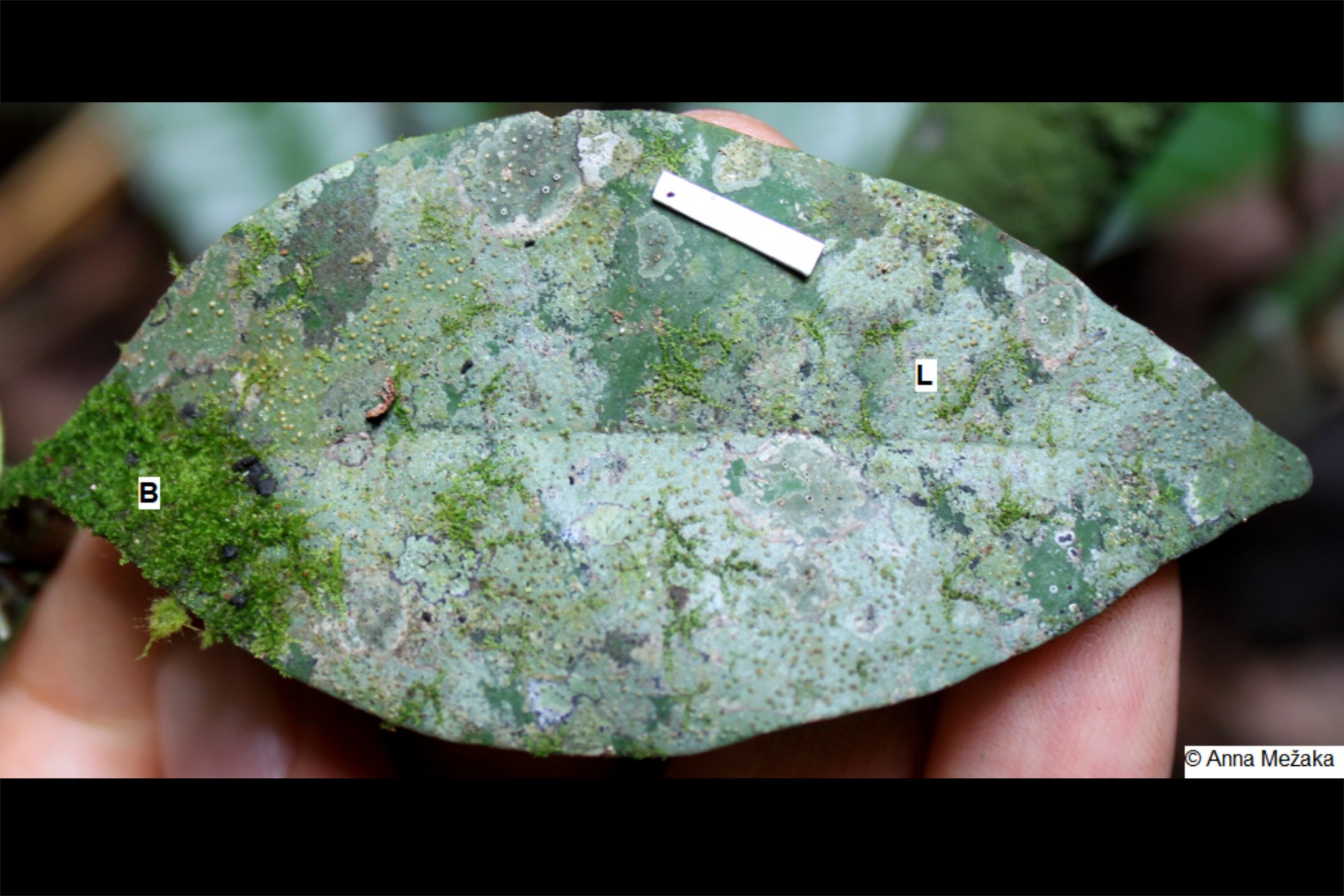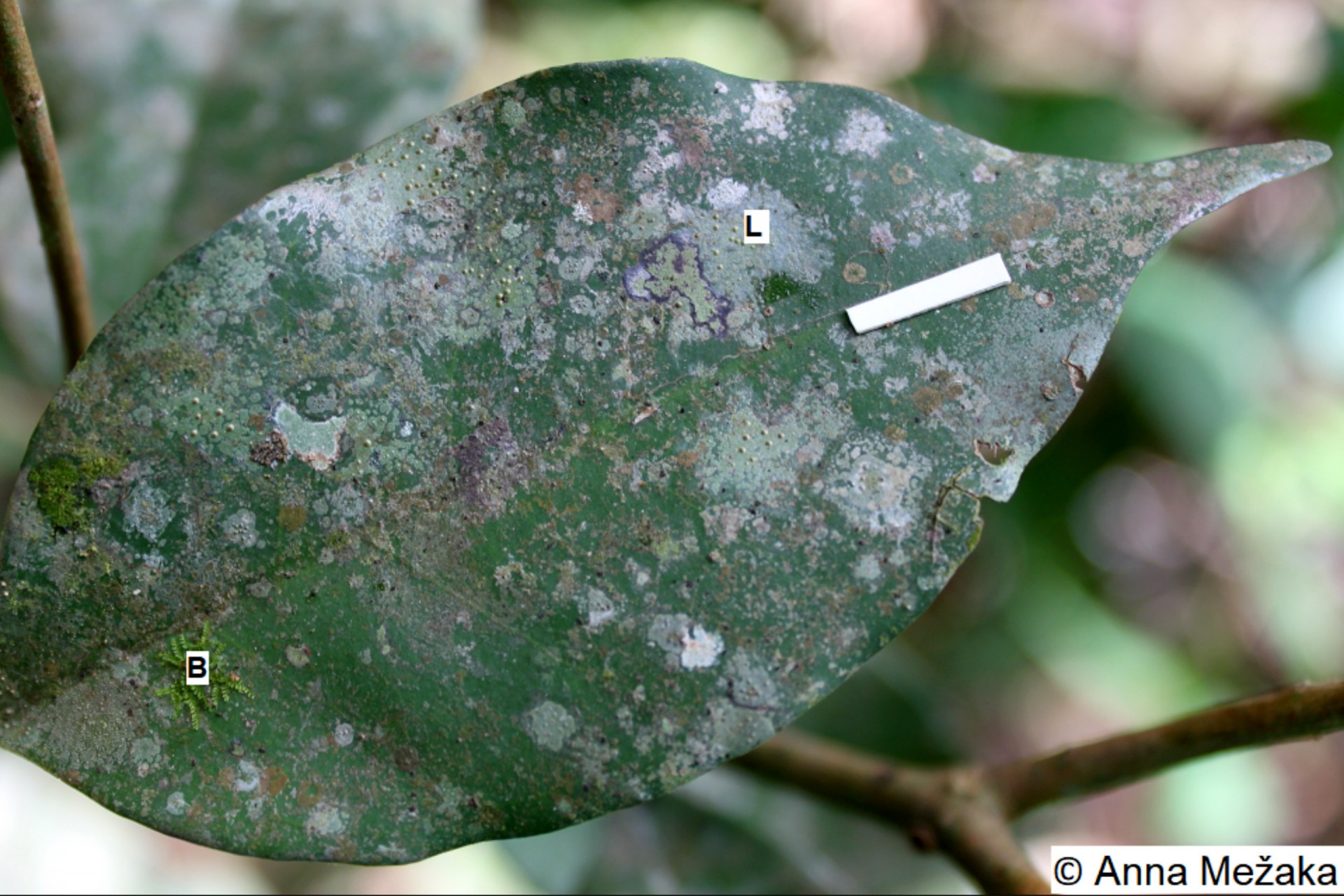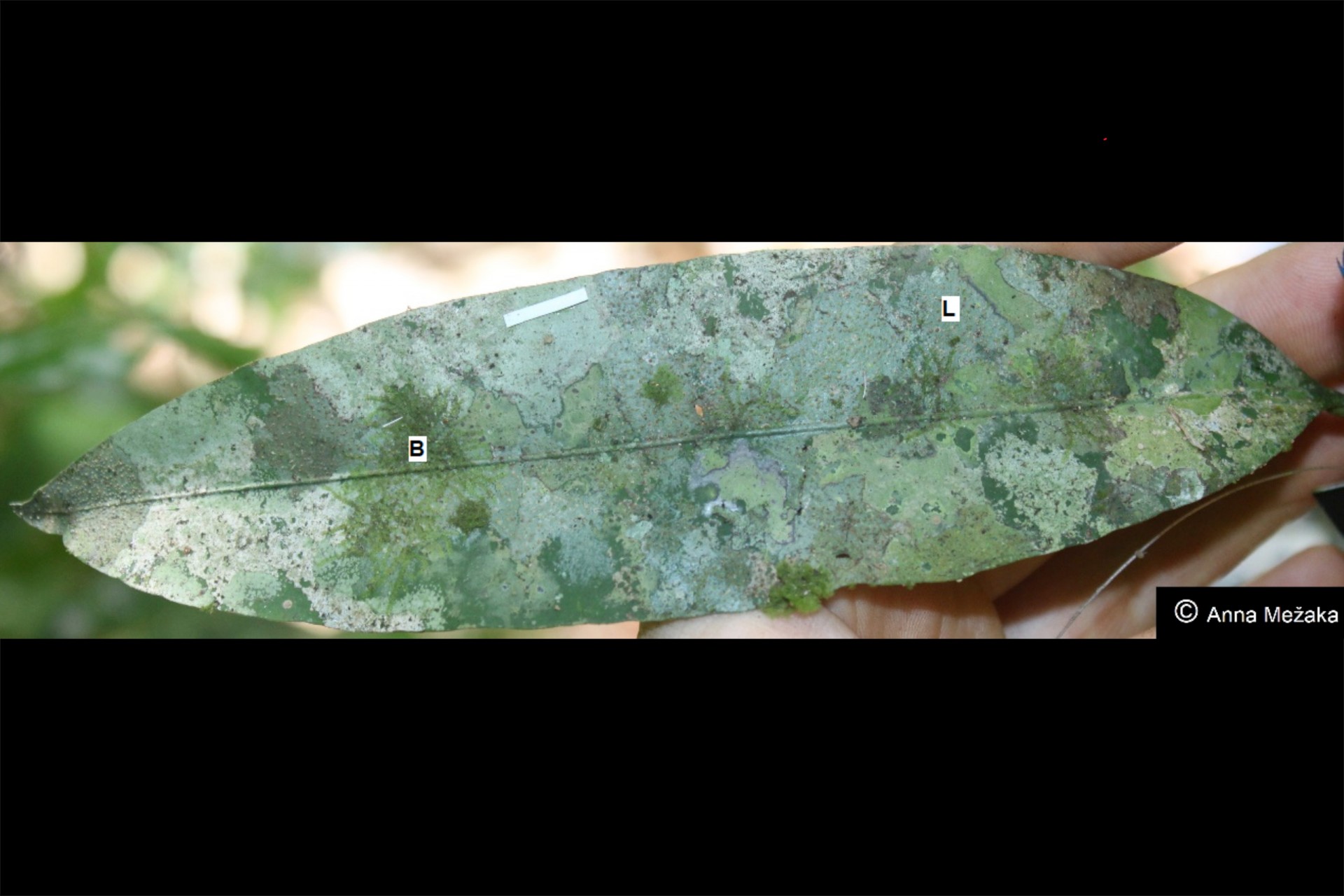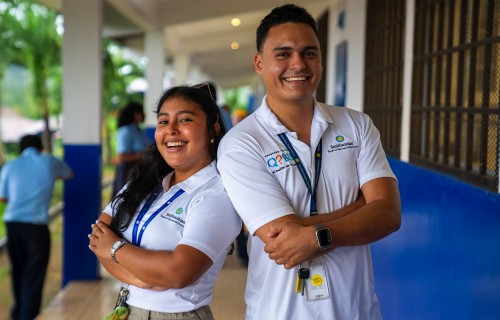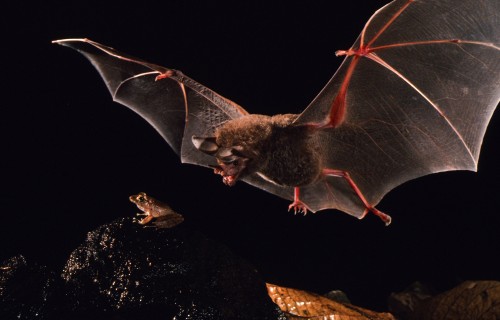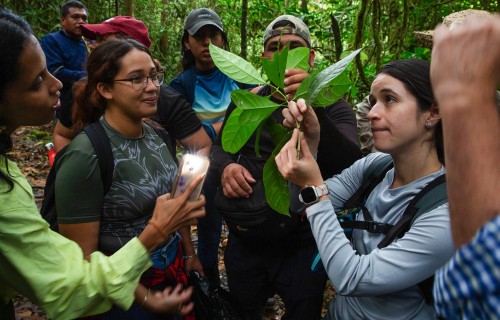Leafcutter ants have blind
spots, just like truck drivers
Life on
a Leaf
Latvian Scientist Studies
Epiphyll Communities
in Panama
Panama
STRI is hosting Dr. Anna Mežaka, originally from Latvia and currently employed at the University of Marburg (UMR), Germany, who is doing a project called “Life on a leaf: species interactions and community dynamics in epiphyll communities” funded by a Marie Skłodowska - Curie Global Fellowship from the European Union.
In collaboration with Dr. Noris Salazar Allen (STRI) and Dr. Maaike Bader (UMR), researcher Anna Mežaka is learning more about tropical biology and theoretical ecology.
“We are studying epiphylls, tiny organisms such as lichens, bryophytes, algae and fungi, that live on the leaf surfaces of trees and shrubs,” said Anna Mežaka. “If you look very closely at the surface of most leaves in a tropical forest you can almost imagine a mini landscape map. But to actually identify what is there, you’ll need a hand lens (a small magnifiying glass) with a light. Then the landscape transforms into a completely different world of structures and textures unique to the epiphylls.”
“These organisms are overlooked in most ecological studies because they are small and difficult to identify. In spite of that, they trap water, affecting the water cycle, and they regulate nutrient cycling in tropical forests as well as providing shelter and food for very small animals and microorganisms,” Anna Mežaka said. “Epiphyll communities have to develop fast, because of the short leaf life-span of a leaf, which makes them practical models for ecological studies about dynamic processes.”
The team is particularly interested in how epiphyll communities change through time and how these successional processes depend on the environment.
“We are doing our study at the Smithsonian research station on Barro Colorado Island (BCI), an excellent place to do this kind of work. At the moment, we are collecting data on epiphylls and their environment on BCI and collecting leaves for epiphyll identification at the Earl S. Tupper Center in Panama City,” said Anna Mežaka.
The next step is for the team to analyze their data to better understand how epiphyll communities change as leaves grow older. The team will analyze the epiphyll dynamics on monitored leaves and will search for the best theoretical model to explain how the community of epiphylls changes with time. Finally, they will ask if epiphylls are a good model for understanding communities of larger plants.
As part of the outreach component of the project, Anna Mežaka also shared her knowledge about epiphylls with several tourist groups from different countries and with students from the University of Panama who visited the island.
As a tourist said after seeing the epiphylls through a hand lens: “I have lived for many years and travelled all over the world and never imagined that all of these amazing organisms exist on one leaf.”

